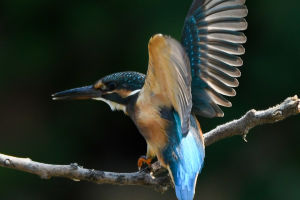As you stroll along the beach, have you ever noticed the creatures around you? Crabs, birds, or perhaps starfish?
If not, you'll certainly start paying attention after reading this article.
Starfish, with their somewhat flashy name, are not only intriguing but also quite mysterious creatures. Few animals are as clever as starfish when it comes to harnessing the power of water.
Starfish move using their tube feet, of which they have thousands on their underside. When water enters the starfish's body through its channels, it eventually reaches these feet. Then, through a series of contractions and relaxations, they propel themselves from one place to another.
Starfish don't have a streamlined shape or fins for swimming. Scientifically, starfish are echinoderms. The term "echinoderm" comes from Greek, meaning "hedgehog skin." This is a complete phylum of animals, with other notable members like octopuses falling under this category.
Starfish are free-living marine animals, often found on sandy or muddy sea bottoms, and crawling on rocks and shells. From tide pools to the deep sea, these creatures are found everywhere. On hard surfaces like rocks or sand, starfish move very slowly. They attach themselves firmly to these surfaces by creating a vacuum with their tube feet.
Despite their seemingly "soft" and "harmless" appearance, starfish are all carnivorous. They feed on smaller animals, including small crustaceans and mollusks.
Now that you know, even though starfish don't have fins or legs, they don't stay put forever. If you're curious about how they move, read on.
We need to study the general structure of starfish. But don't worry, starfish aren't very complex creatures; they don't have the intricate body systems that we humans do.
The movement of all echinoderms, including starfish, is primarily handled by their water vascular system, which is a system of water-filled canals inside the animal's body. This system also includes the sieve-like plate on the underside of the starfish, which has very tiny holes to filter water and transfer it to the nearby "stone canal."
Now, for the main event: the tube feet. Two rows of double-rowed tube feet are arranged along these radial canals and are connected to the canals by slender connections called lateral canals.
The water vascular system is crucial for the starfish's movement. It can create hydraulic pressure to suck in water. All tube feet have a swollen structure called the ampulla, with a thinner base forming a platform. This platform has suction cups that help the starfish adhere to the ground.
When water enters this system through the tiny hair-like parts, it passes through the sieve plate, the stone canal, the circular canal, the radial canal, and finally reaches the lateral canal. It then arrives at the ampulla, where it always stays filled with water.
When the ampulla contracts, it pushes water into the suction cup platform, causing them to extend. This allows one "arm" of the starfish to detach from the surface it's attached to. It can then select the next attachment point, resulting in movement.
Once it reaches where it wants to stay, the ampulla relaxes. This relaxation causes the suction cups to tighten. The vacuum created inside the cups allows the starfish to adhere to the object's surface. After completing these two steps, the starfish has moved to an entirely new position. So, even though it's slow, it's quite effective.
The starfish's water vascular system is always operational. This allows starfish to move from one place to another at any time, without having to wait for waves to change their position.
There are many fascinating things right before our eyes. If we look closely, we can appreciate their wonder.


